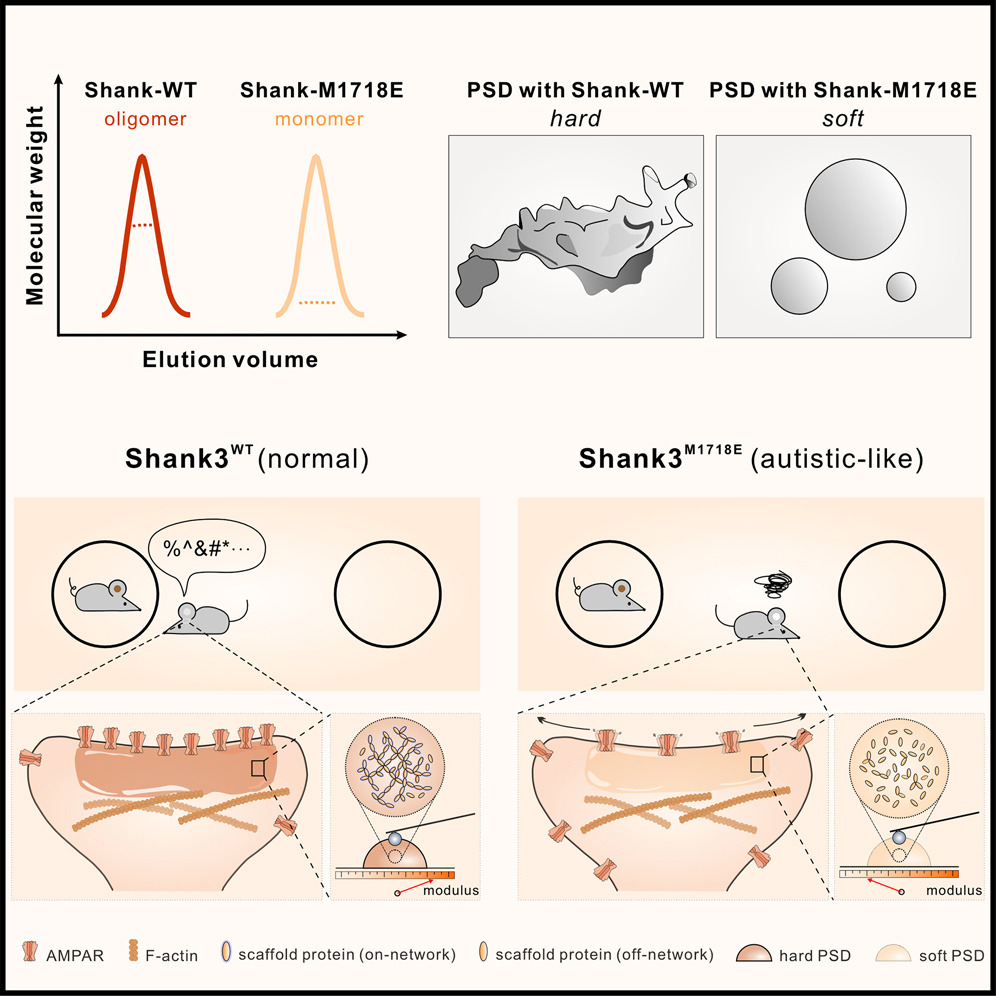Reconstituted Postsynaptic Density as a Molecular Platform for Understanding Synapse Formation and Plasticity
2018.08.02Zeng, M., Chen, X., Guan, D., Xu, J., Wu, H., Tong, P., and Zhang, M.(2018). Cell, 174, 1-16.
Synapses are semi-membraneless, protein-dense, sub-micron chemical reaction compartments responsible for signal processing in each and every neuron. Proper formation and dynamic responses to stimulations of synapses, both during development and in adult, are fundamental to functions of mammalian brains, although the molecular basis governing formation and modulation of compartmentalized synaptic assemblies is unclear. Here, we used a biochemical reconstitution approach to show that, both in solution and on supported membrane bilayers, multivalent interaction networks formed by major excitatory postsynaptic density (PSD) scaffold proteins led to formation of PSD-like assemblies via phase separation. The reconstituted PSD-like assemblies can cluster receptors, selectively concentrate enzymes, promote actin bundle formation, and expel inhibitory postsynaptic proteins. Additionally, the condensed phase PSD assemblies have features that are distinct from those in homogeneous solutions and fit for synaptic functions. Thus, we have built a molecular platform for understanding how neuronal synapses are formed and dynamically regulated.
- Recommend
-
2025-10-22
IQSEC2/BRAG1 may modulate postsynaptic density assembly through Ca2+-induced phase separation.
-
2025-08-22

Shank3 oligomerization governs material properties of the postsynaptic density condensate and synaptic plasticity.
-
2025-08-21
Modulating synaptic glutamate receptors by targeting network nodes of the postsynaptic density condensate.
-
2025-08-19
Current practices in the study of biomolecular condensates: a community comment.
-
2025-06-10
Phase separation instead of binding strength determines target specificities of MAGUKs.

